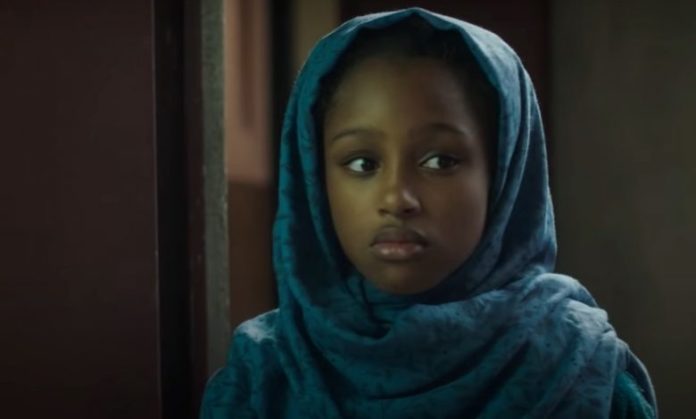Films like ‘Cuties’ are one of many dramas streamed by Netflix which is aimed at hyper-sexualising children and shaping the Muslim mind, writes Tamim Mobayed.
Netflix streaming the French movie ‘Cuties’ has stirred much debate over what some see as the sexualisation of young children and pedophilic tones. Others have defended the movie as credible art, and deemed the commotion surrounding it as being a means for the right to attack freedom of expression, with it being the latest victim of the current “culture war”.
Much of the controversy stems from the movie’s sexualised depiction of 11-year-old children. One of the promotional posters featured the young cast in provocative poses while decked in hot pants, while scenes in the movie centre on seductive dancing.
Muslims in particular have been irked by the show’s premise. It focusses on a young immigrant girl in France who removes her hijab, rebels against her family, and strives to attain her freedom from culturally-imposed restrictions. In one of the most controversial scenes, the protagonist is shown taking a photo of genitalia and posting it online.
The movie’s creator, Senegalese Muslim filmmaker Maimouna Doucouré, explained to NPR that her movie was actually designed to critique the commonplace hyper sexualization of young girls. Regardless of her intentions, a host of psychological ideas can predict the movie’s influence on its young viewers.
Social Learning Theory
At the most basic level, Social Learning Theory (SLT) can predict that merely the presence of an act taking place on the screen and being seen will lead to others imitating it. The developer of SLT and a towering figure in the world of psychology, Albert Bandura, is also active in the edutainment scene. He is among the psychologists who create programming that influences the thoughts and behaviour of its consumers.
Subscribe to our newsletter and stay updated on the latest news and updates from around the Muslim world!
While some might dismiss SLT and its “monkey see, monkey do” framework as being simplistic, a casual read into the impact of on-screen suicides on real life suicides would dispel doubters of this reading of SLT. Another Netflix series, ‘13 Reasons Why’, is an example of the effect that onscreen suicides can have upon viewers.
Scripts and schemata
Another way in which on-screen content can shift attitudes and behaviours is by changing scripts and schemata. Scripts and schemata are essentially knowledge structures we have in our mind that help us navigate our day-to-day lives. By presenting stories with certain narratives, it is believed that the scripts and schemata of the viewers can be modified.
Characters can be shown parting from norms and surviving, even thriving, and that can encourage the viewer that they can do the same. Characters who break norms are known as “norm breakers”, and feature often on screen. Certainly, the star of Cuties is a norm breaker. Another term, “unleashing”, is also relevant. Seeing a young character taking a photo of their genitalia and posting it online can serve as an “unleashing event” – a behaviour that can be contagious, and seeing someone do something, particularly if it’s glorified, can encourage others to do the same.
Crucially, content such as Cuties is not being screened in a vacuum. One study from the Journal of the American Medical Association reported that rates of “sexting” amongst children (<18) were as high as 27.4%. That study also flagged the prevalence of images being forwarded on without consent, with that being one negative issue amongst an abundance of others about this behaviour.
Such behaviours can negatively impact young minds and create a raft of psychological issues at a critical age. Another important element to this conversation is the sexualisation of children that seems to be increasing. While Doucouré may have intended for the movie to make a point against their sexualization, adding more mainstream content that explores children and their sexuality becomes debatable.
Netflix
Cofounder of Netflix. Marc Bernays Randolph’s middle name betrays his interesting lineage – he is the nephew of the “father of propaganda” Edward Bernays. Edward was famously the double-nephew of Sigmund Freud. According to Noam Chomsky, Edwards’s propaganda victories include convincing women to take up smoking, and convincing the American public that Guatemalan democracy needed to be overthrown.
Anger about Cuties represents the latest in a series of accusations from Muslims that have been levelled against Netflix, including that it is propagating Israeli propaganda, as well as a lot of nudity in a number of its shows. While it might seem vogue to attack Netflix, much of these trends are representative of significant strands within the movie industry as a whole; Cuties was much lauded at the popular Sundance Film Festival.
The controversy around Cuties has helped fuel the rise of the movie throughout the world. According to one website, Cuties is currently the second most popular movie in Saudi Arabia, fifth in the UAE, while it sits at tenth in Pakistan. If movies like Cuties are in-part designed to shape Muslim thoughts and behaviour, they are reaching their audience.
Finally, we need to put to rest the idea that “they’re only TV shows” and carry no influential weight. A range of thinkers from outside the Islamic tradition testify to the significance of stories in shaping our realities.
In the words of psychologist Albert Bandura:
“These dramatic productions are not fanciful stories…they portray people’s everyday lives, help them see a better future and provide them with strategies and incentives that enable them to take the steps to realize it.”
While famous historian Yuval Harari talks of:
“A huge responsibility on the shoulders of poets, and screenwriters, and actors, and artists. You think ‘oh we just entertain people’. But this is not the case, it goes much, much more deeply. It provides the scaffolding for people to make sense of their individual lives and their collective lives.”
Within the Islamic tradition itself, no greater endorsement for the uses of stories comes than the Quran’s utilisation of them. Ultimately, Cuties should serve as a multifaceted wake-up call; to the messages explicitly and implicitly laden within mainstream media about Islam and Muslims, but also, to the realities of the social media age and how it is impacting children. Most significantly is the possibility that stories are being deployed to shape the thoughts and behaviours of Muslims by using representative characters.






















